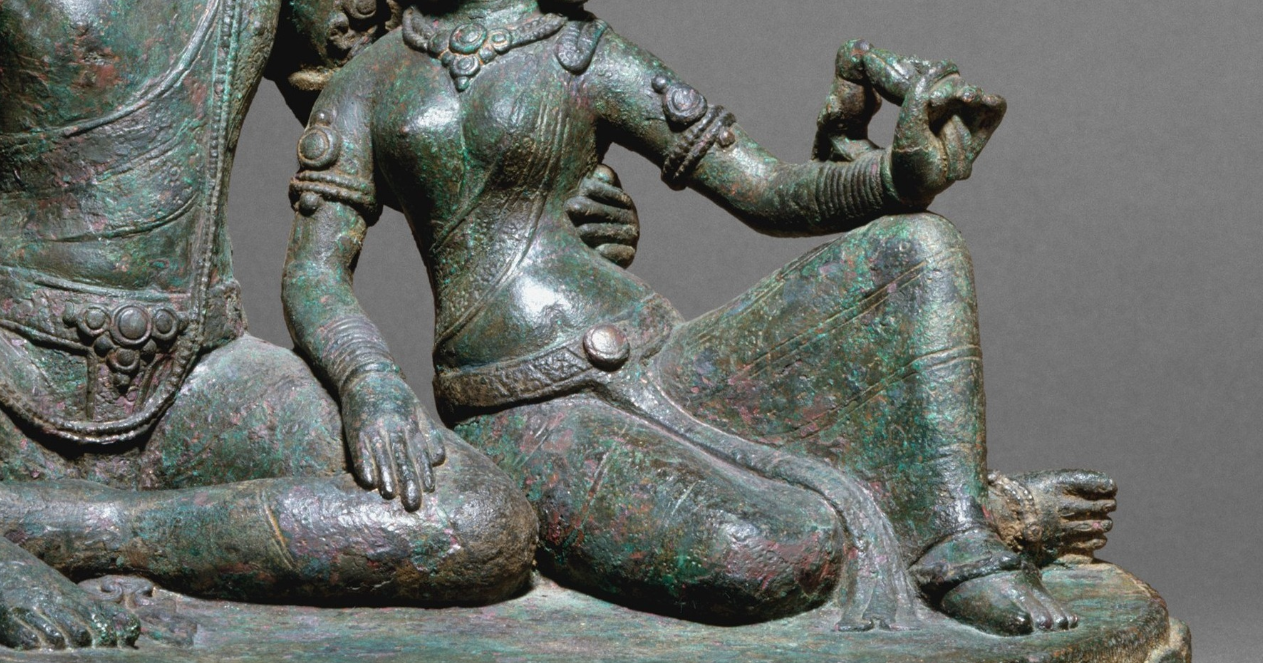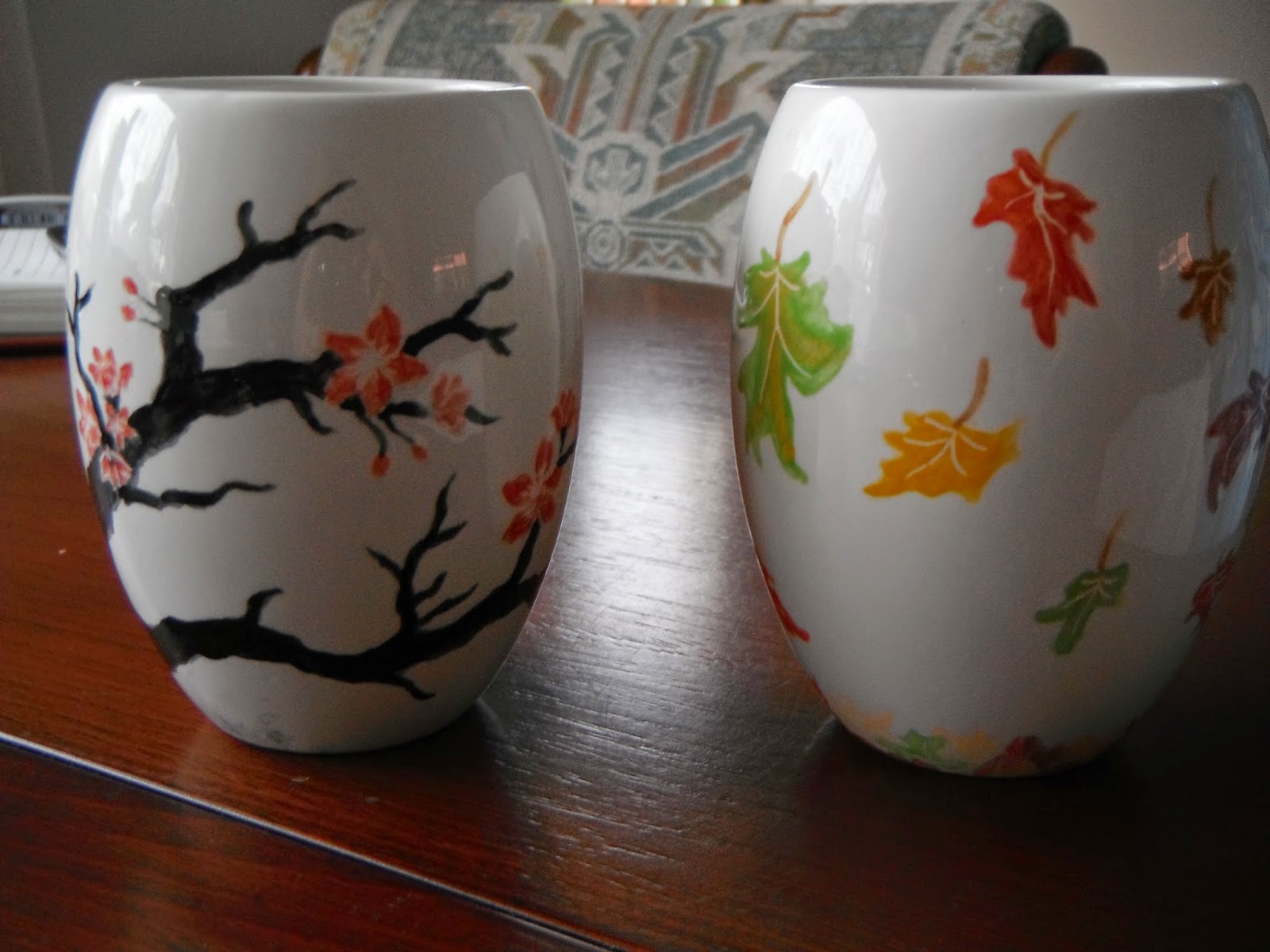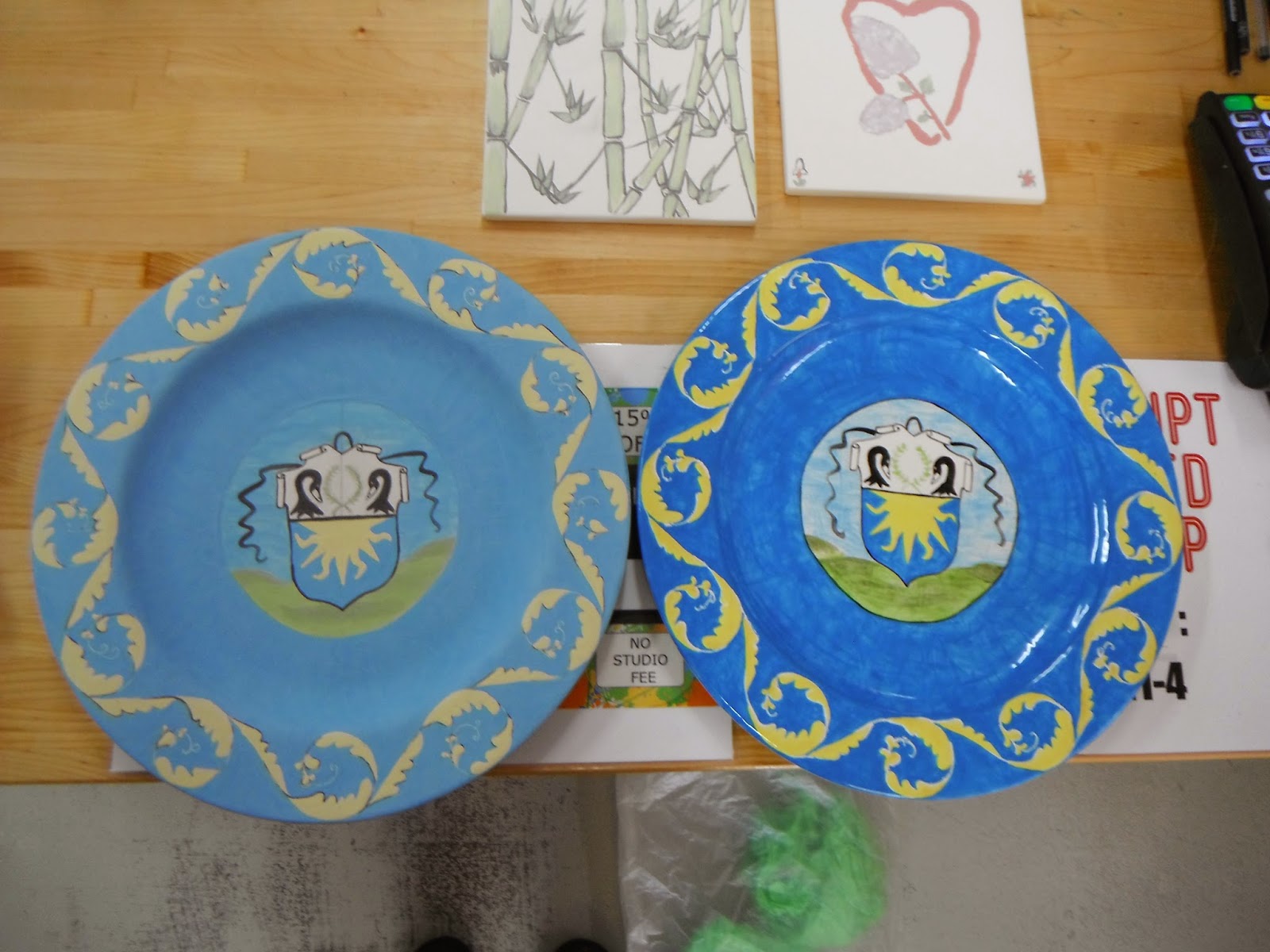Not amazing resolution, But I Love what the edge of the sari, it looks like dagging, or bling or maybe weights? Standing Pavati, India, Tamil Nadu, Chola period, 11th century, copper alloy. Accession/museum number 1979.021, Asia Society
Standing Shiva and Parvati, India, Chola period, 13th century. Copper alloy, accession Number 2000.284.5, Met Museum of Art.
Close-up of Pavati's garment with circular pattern. Centre of one looks like a 5 petal flower while a lower one looks like a swirl.
Not Indian but Indonesian (java). A posthumous portrait of a Queen as Parvati (detail). Eastern Javaneese, 14th century, Andesite, Accession number 2001.407. Met Museum. Her lower garment seems to be 100% decorated in interlocking geometric shapes/overlapping circles. This is possible blockprinted fabric such as that I've posted previously.
Detail of Shiva Seated with Parvati. Nepal (Kathmandu Valley), 10th centiry. Accession number 1983.563. Met Museum. Parvati's lower garment features horizontal stripes with pattern infill very similar to that of the cushion on which they recline (leaves? and flowers?)
Detail of Pavarti. 16th century, Tamil Nadu, India, Bronze. Accession Number 33.65.8. Met Museum. Lower garment is deocrated in a repeating pattern of concentric circles // flowers?
Detail of Shiva, Uma and their son Skanda (Somaskandamurti). Tamil Nadu, early 11th century, copper alloy. Accession number 1982.220.10 Met Museum. Uma's lower garment is decorated in a range of (non-repeating patterns) that feature circles.
Detail of Yashoda with the Infant Krishna. India, Tamil Nadu. early 12th century. Accession number 1982.220.8, Met Museum. Simple by comparison to previous images, this garment features a repeating pattern of dots forming a diamond and a circle linked with a chain of dots - lovely!
Detail of Shiva seated with Uma (Umamaheshvara), Thakuri dynasty, 11th century, Nepal, Copper Alloy. Accession number 1987.218.1. Met Museum. The garment here is badly corroded so I cannot make out much detail from the picture. Her drape appears to go over her shoulder and the lower garment seems to be decorated with small circles ringed by dots.
That's it for now because it's late and I have to work tomorrow.



















